Last updated on January 11th, 2024.
- Fly fishing nymphs: a neon underwater shocker - May 7, 2019
- Sand Eel Fly: A Simple and Effective Pattern - September 1, 2018
- Pike Flies: Effective Patterns for Predators - May 24, 2018
Optimised for use on light #6 to #7 rods, I make the body of a lot of lead to keep the sand eel fly pattern sinking to the ground.
The Idea behind the Sand Eel Fly Pattern
This is a successful pattern when small bait fish and sand eels are out and about. It imitates a sandeel fleeing to the bottom. The sand eel streamer shines when retrieved quickly. You can fish it well on a floating line as well as on intermediate or sink line for sea trout and striped bass – both highly sought after fish on a fly rod.
A welcomed side effect of the sand eel fly is the fact that the high dead weight of the fly stretches the leader even when a cast is not perfect. The fly fishes from the first moment it hits the water surface. That’s one of the reasons that make it so successful.
This sand eel fly is a great pattern to fish for sea trout and sea bass in flat areas of the Atlantic, North and Baltic Sea. It’s very effective and (with a little practice) also quick and easy to tie.
How to Tie the Sandeel Fly Pattern
Material list for the sand eel fly:
– Salt water hook e.g. Varivas 2610 ST-V #6
– Round lead, optionally 0.5mm to 1mm
– Polar Hair in different colours
– Strong tying thread, Fabisch Fly Fishing 12/0
– Flash
– Kystal Flash
– Eyes, 3D by Flys & More
– UV-adhesives, “SOLAREZ” available at Solitip.de
– Nail varnish, transparent
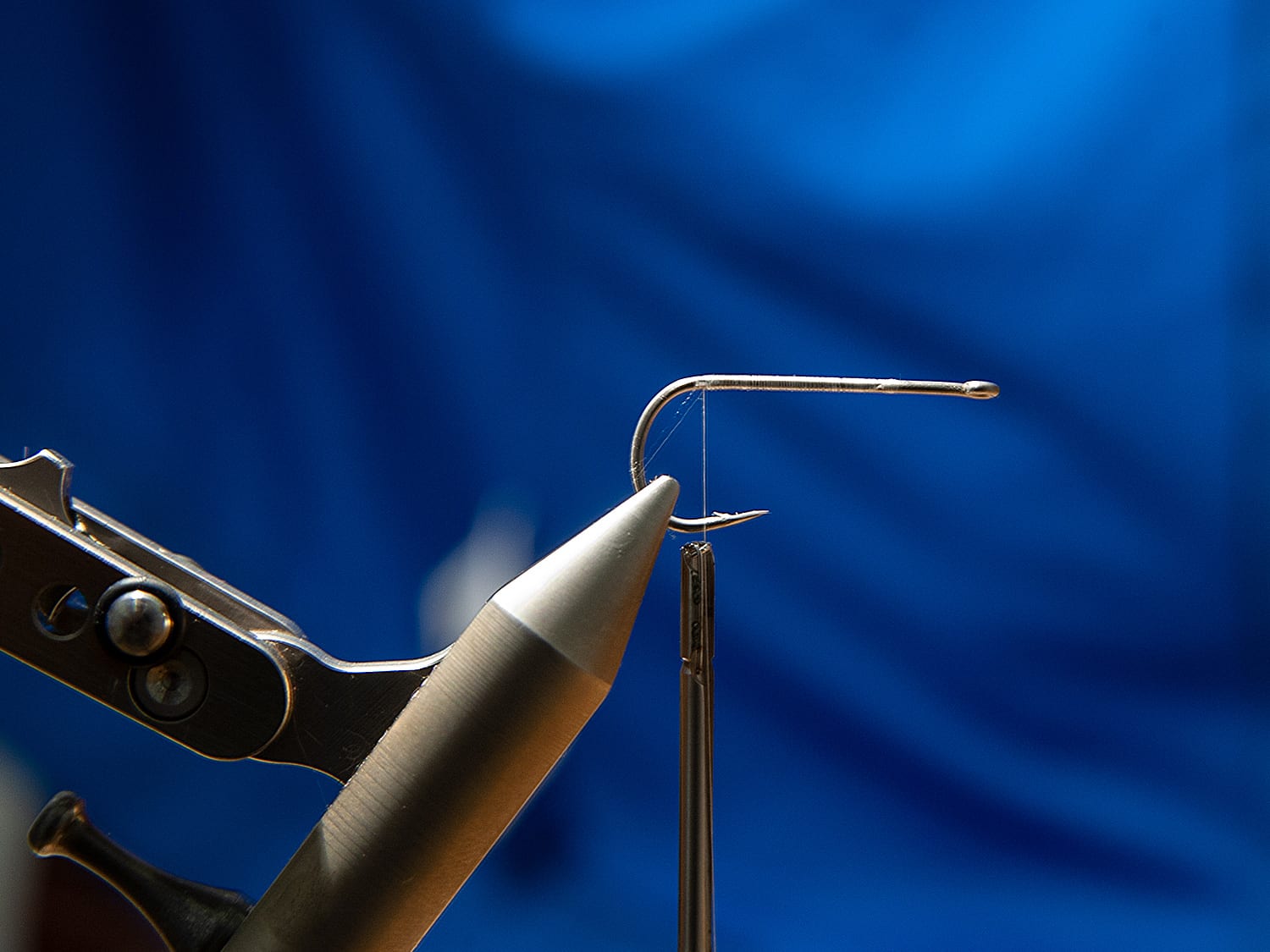
Apply the basic winding to the saltwater hook. Fix with superglue as always.

Apply a lead winding. The lead has two functions: it should weight the fly so that the sandeel imitation always jiggs nicely. This way it dives to the bottom. It also forms the round fish body. This saves material and time.
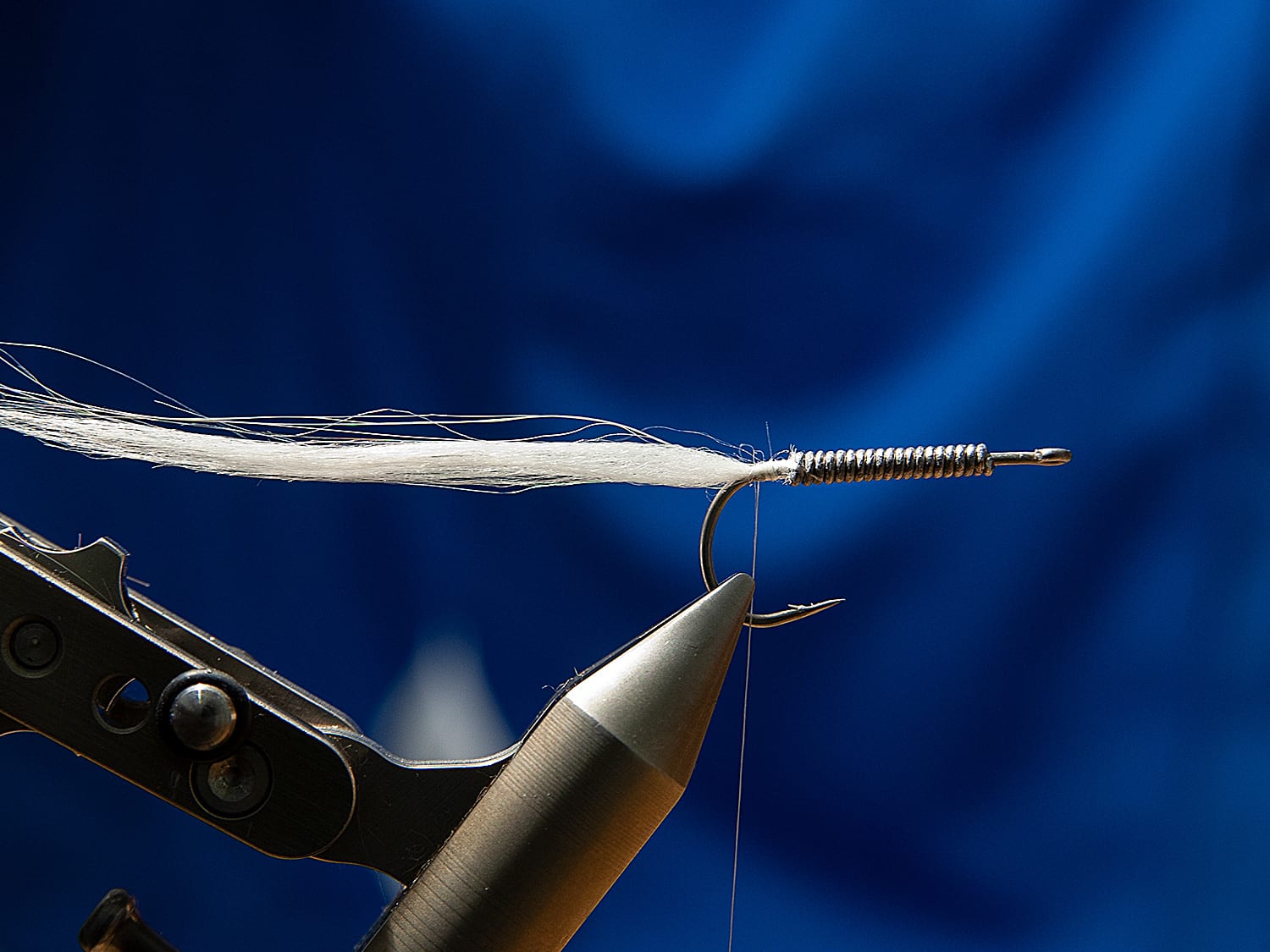
Tie the polar hair in front of the hook arch. First white hair, then some flash material. Then again one or more layers of polar hair. Colors can vary as you like. In this case chartreuse, i.e. strongly UV active.
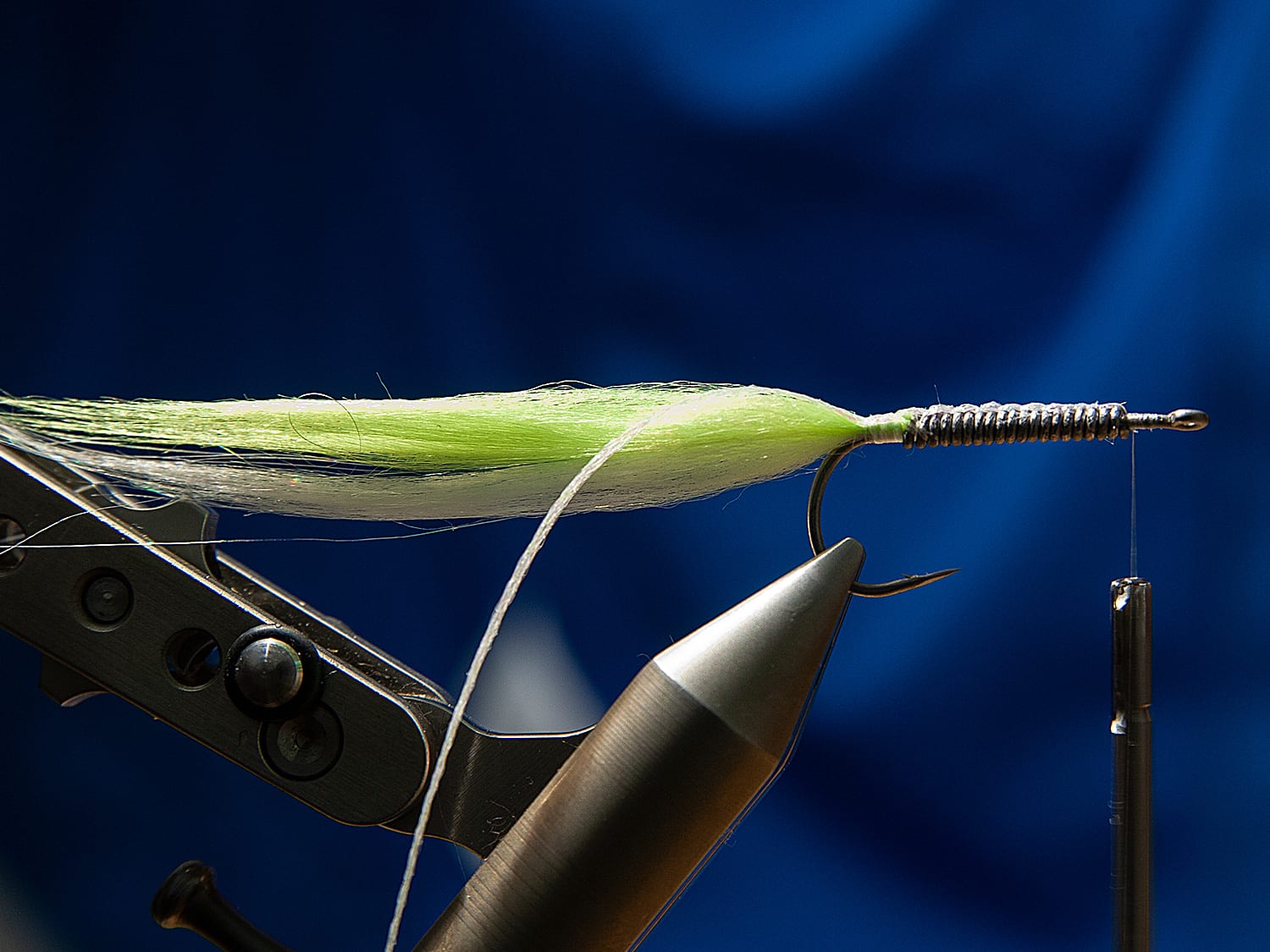
The body material for the sand eel fly is tied in at the back and fixed with the tying thread.
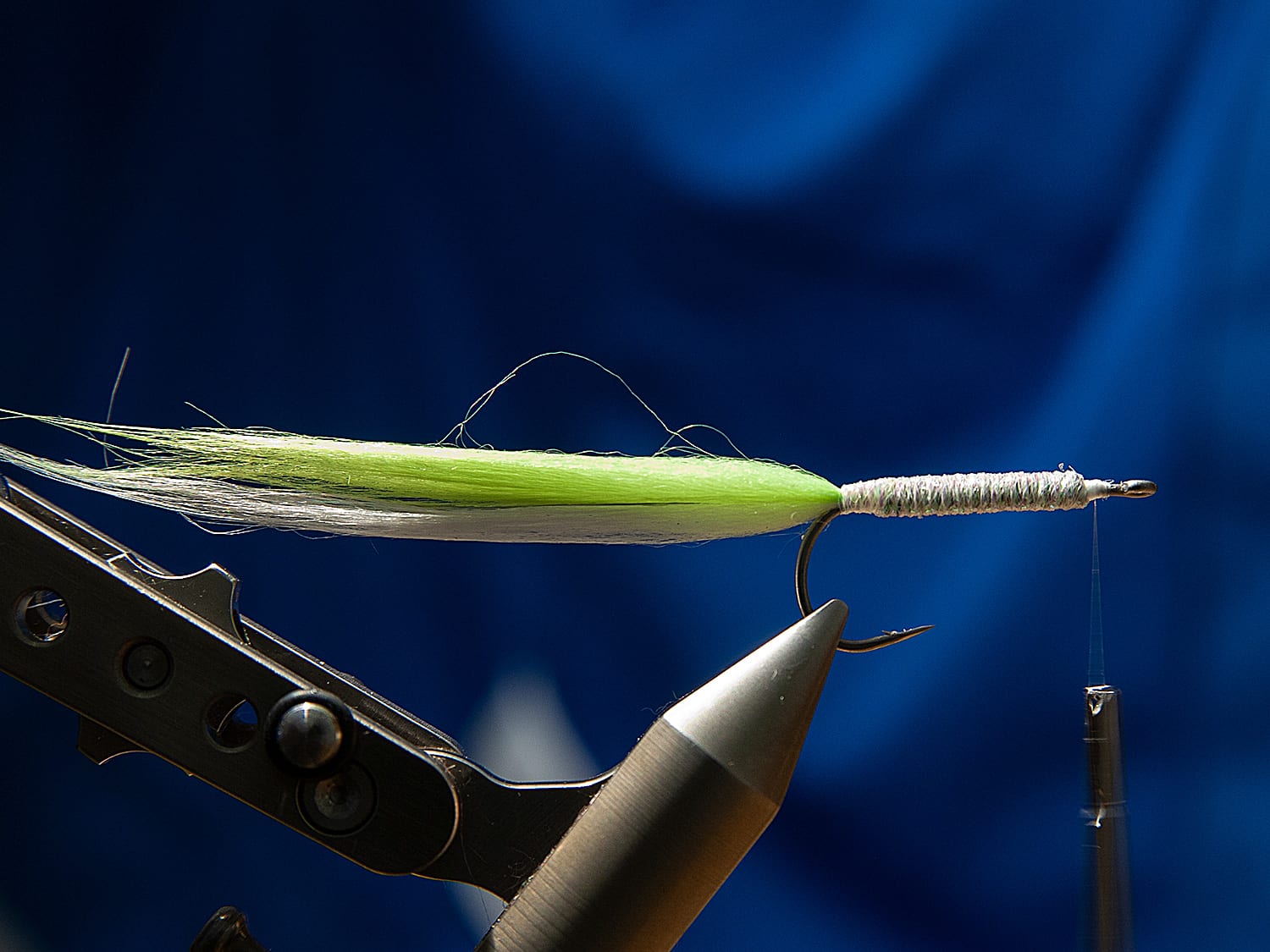
Tightly wrap the material around the lead to the front. Fix it to the head.
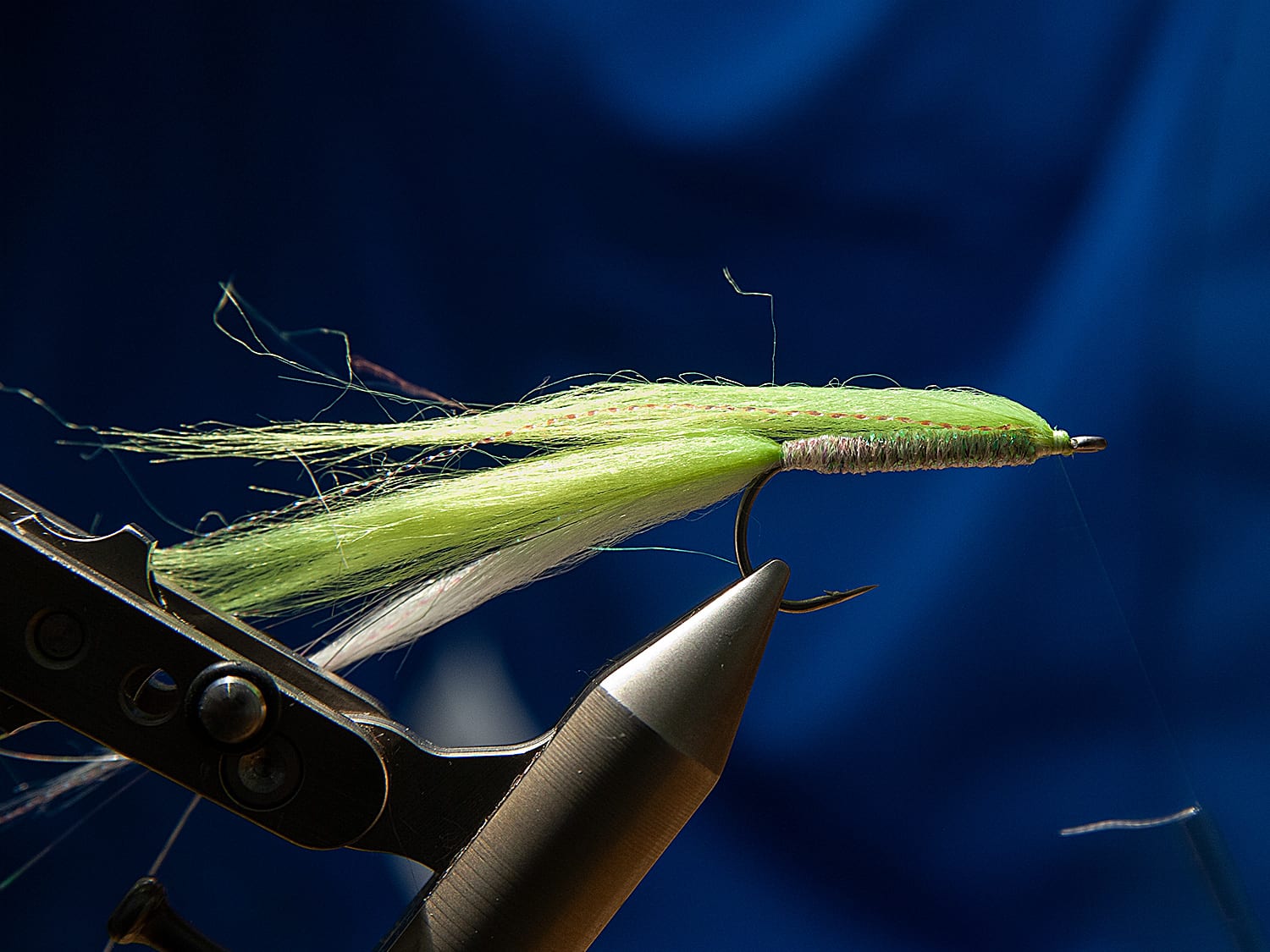
Directly behind the eye another tuft of polar hair in the desired back color of the fish. The material is well fixed and pulled back over the shank together with the integrated krystal flash.
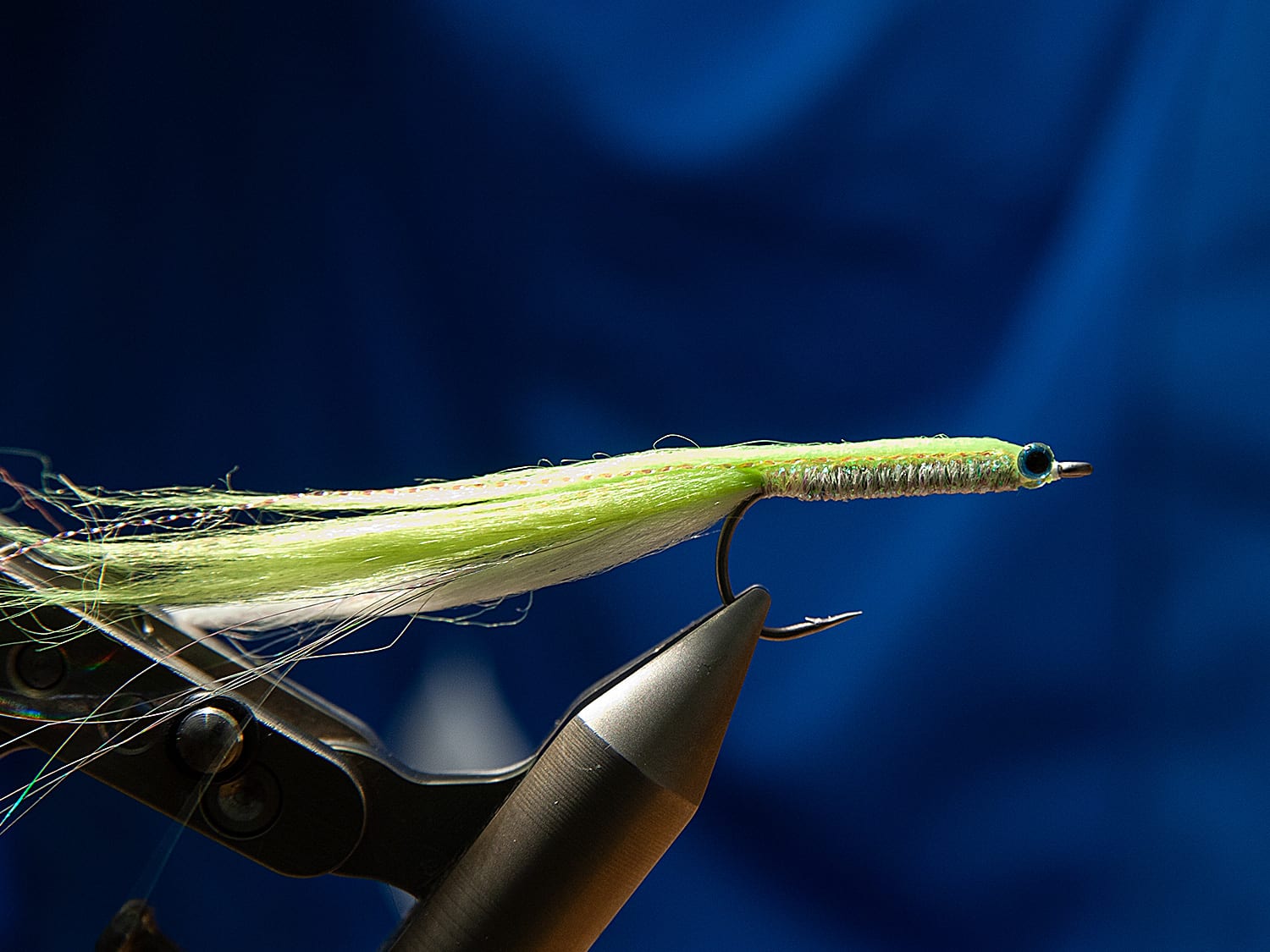
Apply the 3D eyes on both sides and slightly fix them so they do not slip during processing with the UV varnish.
Now apply more UV-adhesives in several layers until a round, even body is formed. The resulting body is brushed and fixed with nail polish. The sand eel fly is done!

The finished sand eel fly pattern

Top view of the sand eel fly pattern

Different colour variations of the sand eel fly pattern
Check out more of Rainer’s work here:
FAQs: Sand Eel Fly
What is a sandeel fly pattern?
A sandeel fly pattern is an artificial fly designed to imitate sandeels, which are slender baitfish found in coastal waters. These flies are often used in saltwater fly fishing for species like striped bass, sea trout, and other predatory fish that prey on sandeels.
When is the best time to use a sandeel fly pattern?
Sandeel fly patterns are particularly effective during periods when sandeels are abundant and actively sought by predatory fish. This often occurs in the warmer months, and these flies can be productive in both saltwater and estuarine environments.
What are the key features of a sandeel fly pattern?
A typical sandeel fly pattern features a slender and elongated profile to mimic the shape of real sandeels. The fly may incorporate materials like bucktail, synthetic fibers, or flash to simulate the baitfish’s appearance. The coloration often matches the natural hues of sandeels, such as olive, silver, or blue.
How should I retrieve a sandeel fly pattern?
The retrieval technique can vary, but a common approach is to use short, quick strips to impart an erratic and darting action to the fly, mimicking the natural movement of fleeing sandeels. Experiment with different retrieve speeds and pauses to find what triggers strikes.
What fly rod and line setup is suitable for fishing with sandeel fly patterns?
A 9 to 10-foot fly rod in the 7 to 9 weight range is commonly used for sandeel fly fishing. A weight-forward floating or intermediate fly line is suitable for presenting these flies in shallow to moderately deep water. Leaders should have a sturdy tippet to handle aggressive strikes and potential larger fish.







